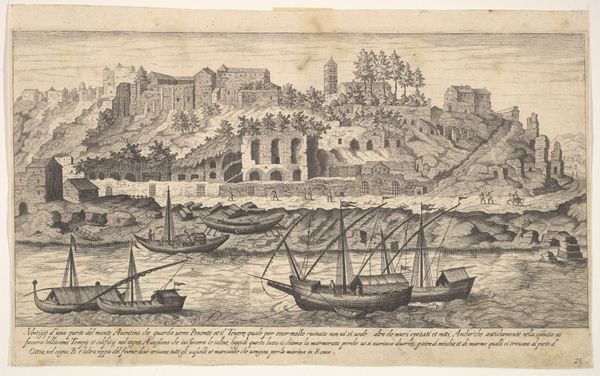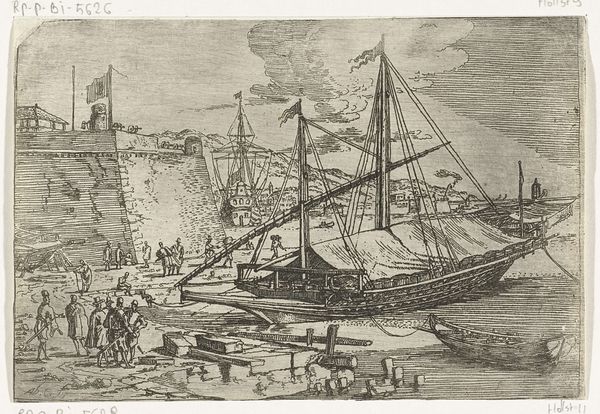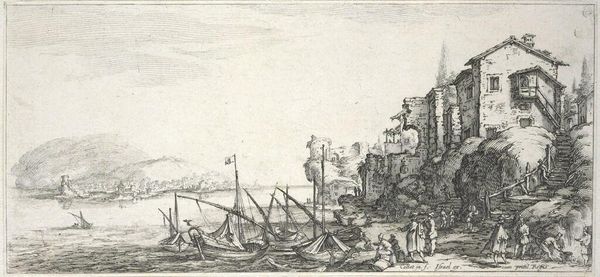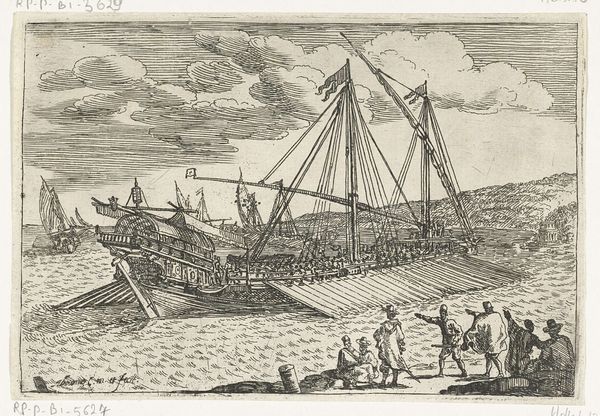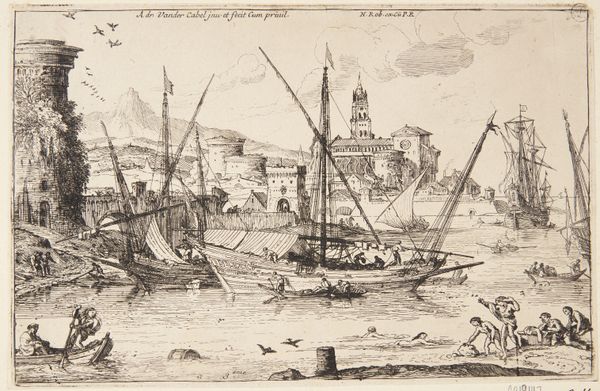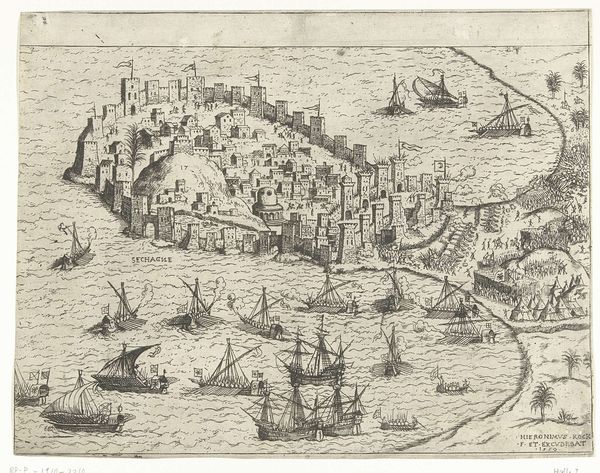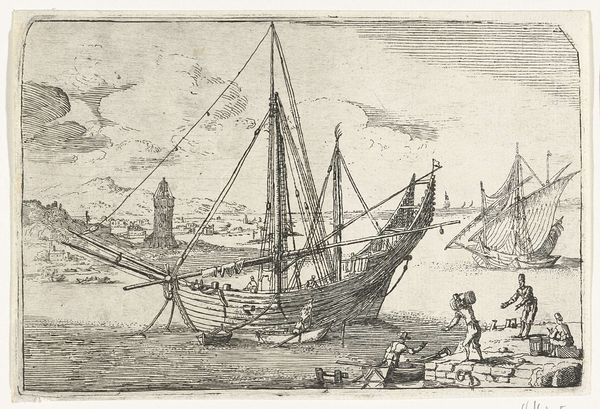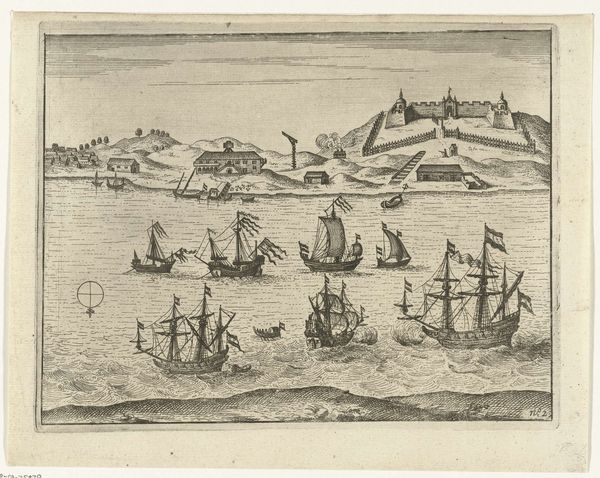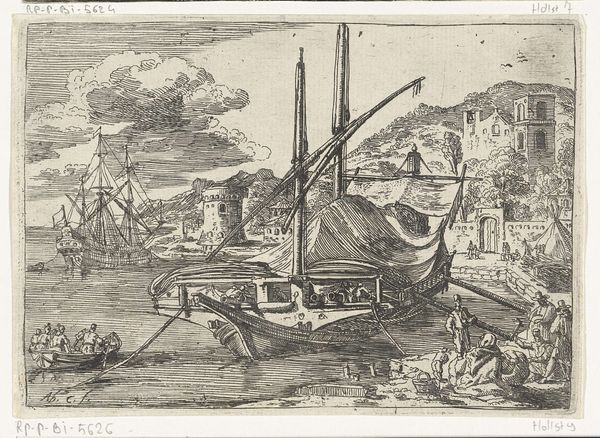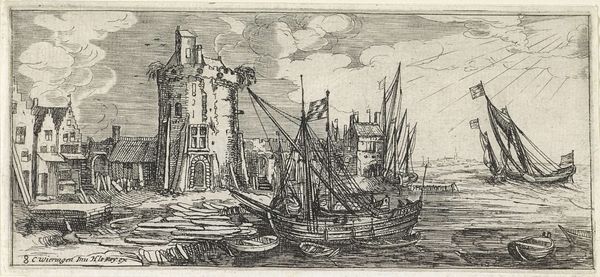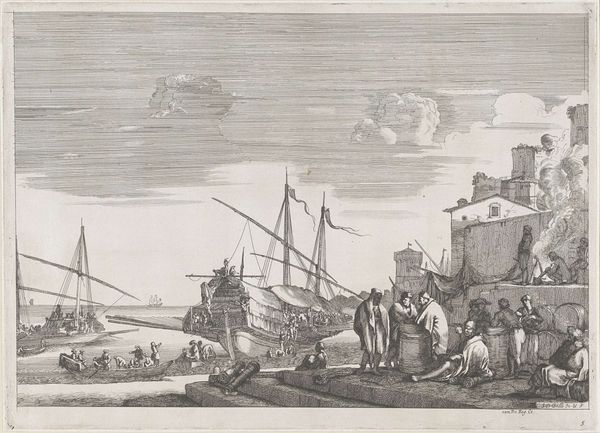
drawing, print, ink, engraving
#
drawing
#
baroque
#
pen drawing
# print
#
landscape
#
ink
#
line
#
cityscape
#
history-painting
#
engraving
#
realism
Dimensions: height 128 mm, width 188 mm
Copyright: Rijks Museum: Open Domain
Curator: Before us we have "Galei voor anker aan de kade van de haven van Messina," a pen and ink drawing by Abraham Casembroot, likely created sometime between 1603 and 1658. Editor: It strikes me as a very active scene, though rendered in a fairly restrained palette. All those fine lines create a palpable sense of bustle at the harbor, a space alive with commerce and connection, don't you think? Curator: Absolutely. It's fascinating how Casembroot uses linear perspective to lead the eye. The galleys, rendered with such meticulous detail, dominate the foreground, their forms acting almost as screens through which we view the receding city. Notice, too, how the textures shift: from the defined rigging to the softer, more gestural hillside. What underlying power structures do you see represented here? Editor: Well, considering Messina's history, this is hardly a neutral portrayal of maritime activity. The city was a strategic point of contestation. These ships are as much tools of power as they are vehicles for trade, representing the vested interests of a colonial system dependent upon both mercantile strength and naval dominance. And what is more the implication for the people living in the city below being dependent on what these galleys bring to Messina? Curator: Indeed, we are seeing here how an image normalizes the maritime presence in this space, cementing its significance, even celebrating it through artistic depiction. Ships and galleys throughout the 16th and 17th centuries take on their own symbolism as the ultimate connector for resources, people, and ideas, acting almost as their own centers for cultural dissemination. It is difficult to see such galleys on the shore of a city and see something benign or without larger implication to how populations, as well as cultural memory are managed, wouldn't you agree? Editor: It is an assertion, though visually compelling. This piece shows how aesthetic beauty can so easily mask the undercurrents of politics and power that underpin any visual record. Looking at the intricate city beyond and considering who prospered and who suffered because of the economic and martial exchanges enabled here is so central to a holistic approach to understanding images such as these. Curator: Yes, a great reminder that even a seemingly straightforward maritime scene carries layers of complex historical and social implications. The act of artistic creation itself holds power to memorialize, challenge, or subtly reinforce structures that impacted everyday lives. Editor: Agreed. There is beauty here, undeniably, but there is also the indelible echo of lived experience shaped by these vessels and the agendas they represented.
Comments
No comments
Be the first to comment and join the conversation on the ultimate creative platform.

